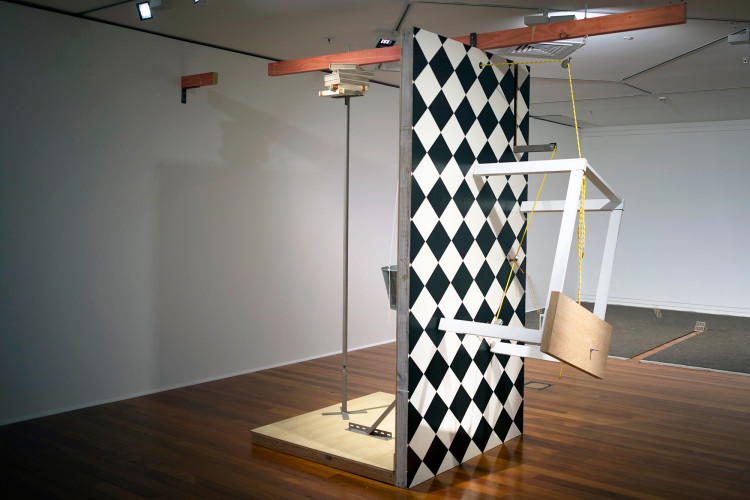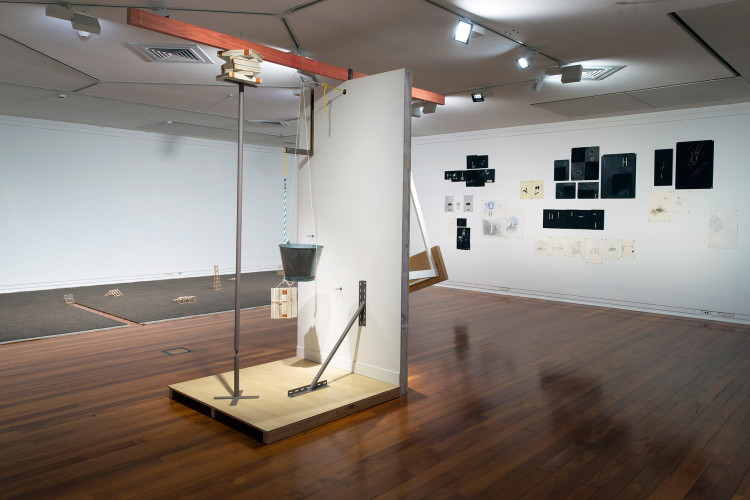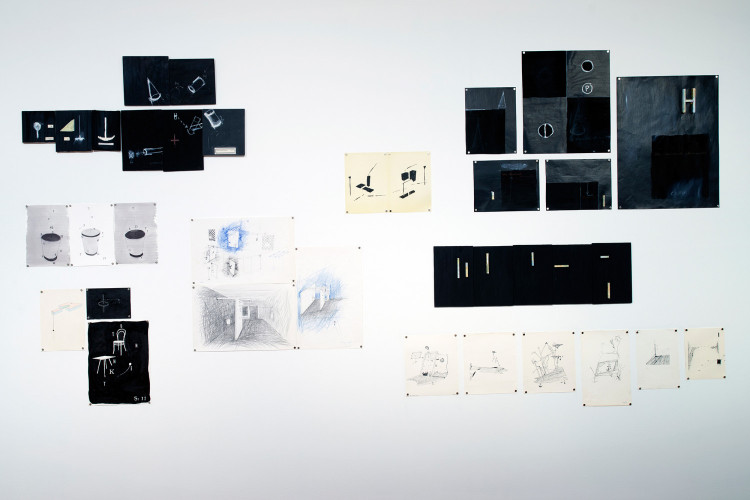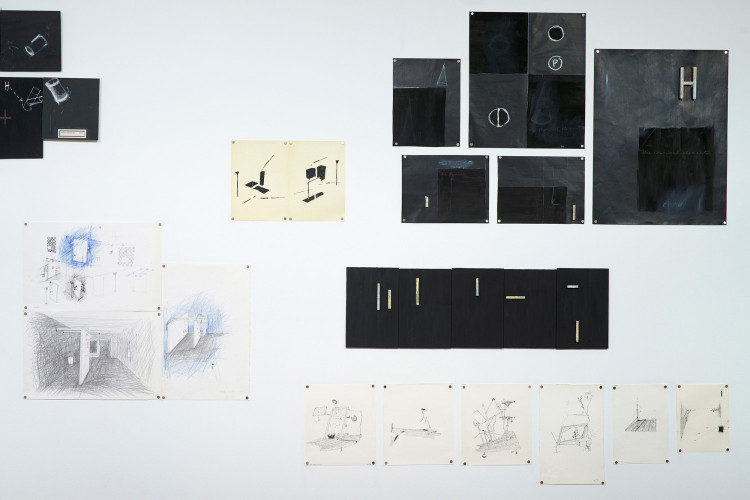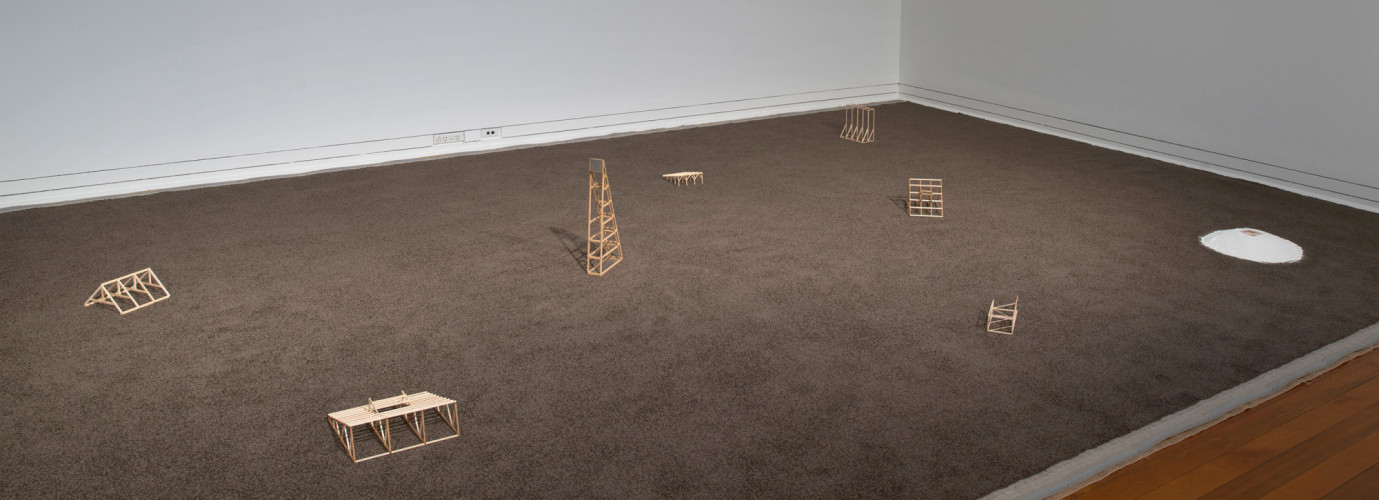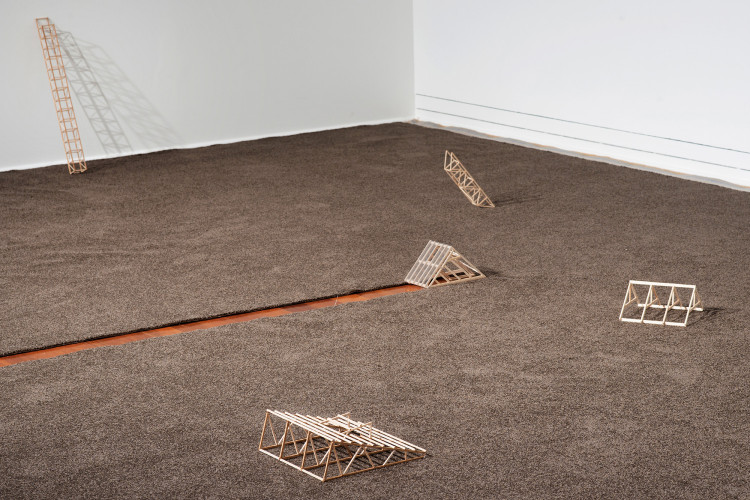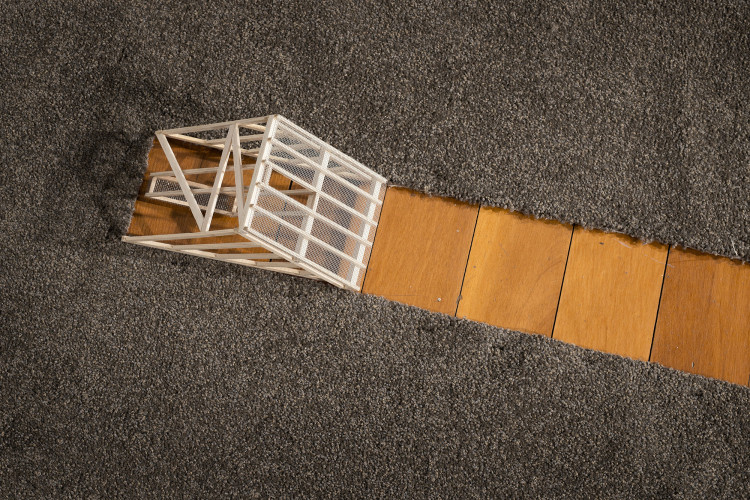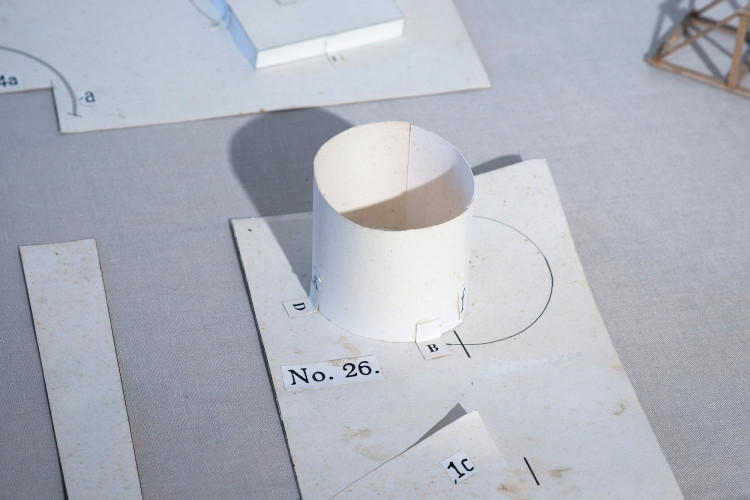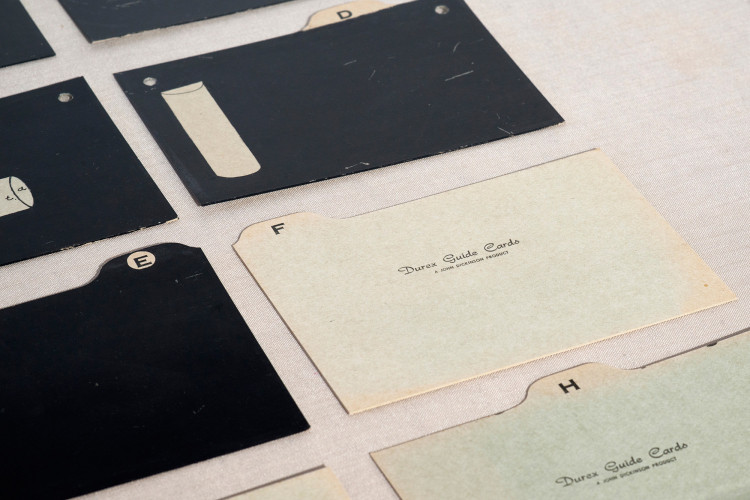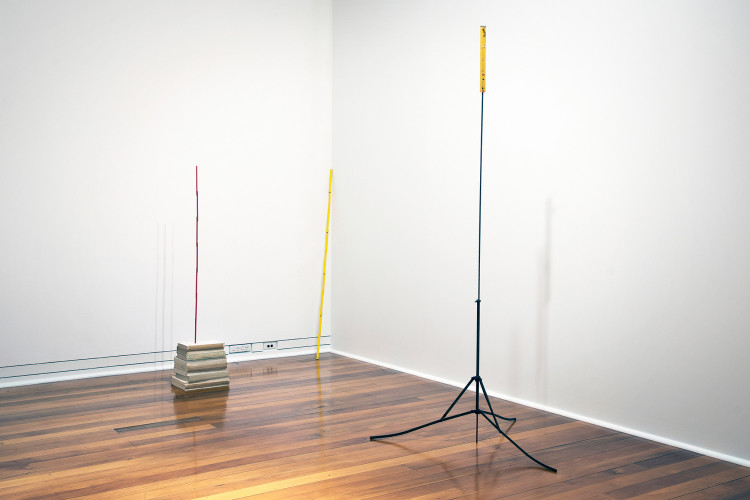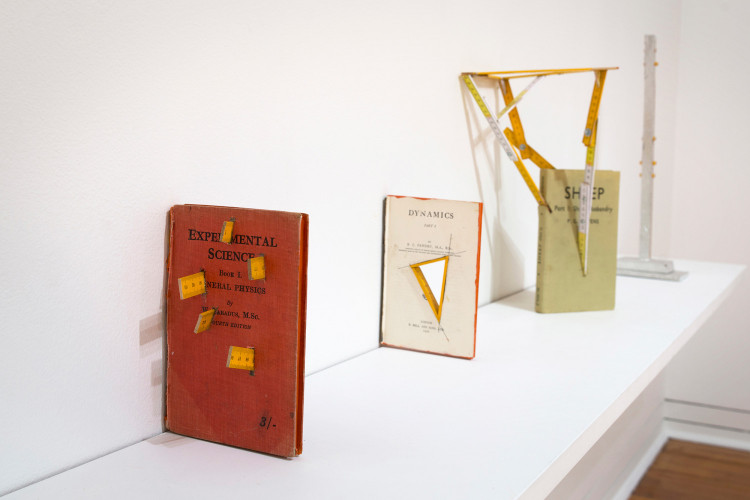Paul Cullen
Building Structures + +
30 May 2020 - 16 August 2020
Paul Cullen (1949—2017) is one of Aotearoa New Zealand’s most respected sculptors and installation artists. Due to his modest and self-effacing approach to art and life however, he remains greatly underestimated. Building Structures + + features a selection of works from different phases of Cullen’s forty-year career, drawn from the artist’s estate and shown together in Ōtepoti Dunedin for the first time.
The exhibition title is drawn from one of Cullen’s earliest experimental projects, which is partially reconstructed at Dunedin Public Art Gallery. For the original Building Structures project, presented in 1979, Cullen installed 30 quasi-modular balsa wood models around the walls, ceilings, and floor of Auckland’s Barry Lett Galleries. Right from the start, Cullen was in the business of treating his art as an ever-growing catalogue of physical and visual components that could be assembled and reassembled in different ways. He was drawn to the systematic—to organised complexity and methods for measuring—but also to whimsical humour and precarious contrivances. The exhibition offers an introduction to Cullen’s abiding interest in the languages and materials of classification, construction and graphic organisation, hinting at the richness of his practice overall.
Curated by Marcus Moore and Allan Smith, with support of Paul Cullen Archive; Jane Sanders; School of Art Whiti o Rehua, Massey University; Elam School of Fine Art, University of Auckland; and Creative New Zealand.
PAUL CULLEN
Aotearoa New Zealand (1949 – 2017)
Education
In 1975, Paul Cullen graduated with a Diploma of Fine Arts (Hons) in Sculpture from the University of Canterbury. Prior to this, he had completed a BSc in biological sciences from the University of Auckland and spent a year studying landscape design at Lincoln University. Later in his career as a lecturer and artist, Cullen completed a Master of Fine Arts (2000) and a Doctor of Fine Arts (2007) at the University of Auckland.
1970s/1980s
Early work exploring links between cultural anthropology, molecular biology, and archetypal architectural forms was shown in Cullen’s first solo exhibition at Christchurch’s The Centre Gallery (1975), and in Building Structures (1979) at Auckland’s Barry Lett Galleries. During the 1970s, Cullen’s installations were also included in important group exhibitions such as Auckland City Art Gallery’s Young Contemporaries (1977), and the Mildura Sculpture Triennial, Victoria, Australia (1978).
Three exhibitions in 1983—Table Series (RKS Art, Auckland), Table Series (Disjunctions) (Brooke Gifford Galleries, Christchurch), and Table Series on Construction (Robert McDougall Art Gallery, Christchurch)—presented variations on quasi-architectural maquettes made from model makers’ stripwood or balsa sticks attached to small inclined table tops on skeletal stands. An installation with bricks and wood, continuing Cullen’s interest in simply constructed modular systems, was included in Auckland City Art Gallery’s Aspects of Recent New Zealand Art: Sculpture 1 (1986).
1990s
Cullen’s installations started to feature dismantled and altered everyday objects, including dissected furniture and model globes or planets deployed like props for amateurish and absurdist science experiments. Key exhibitions over this decade included: The Moon/Navigation, Artspace, Auckland, and Explaining the Results of Observation, Centre for Contemporary Art, Hamilton (1991); Gravity/Model for a Hypothetical Space, Sofa Gallery, University of Canterbury, and Incident at Z-152, Botanic Gardens/Robert McDougall Art Gallery, Christchurch (1999).
2000s/2010s
In the last two decades of his career, Cullen pursued exhibitions and itinerant projects in numerous international cities including Manchester, London, Halifax, Stockholm, Sydney, Melbourne, Seoul, Chung-Buk, Sao Paolo, Cheongu, Alabama, Los Angeles, Marfa, Munich, and Berlin. His lexicon of objects, materials, and formats continued to expand, incorporating yellow pencil-infested furniture fragments, roof-top constructed gardens, chairs and tables pinned to ceilings with clusters of long battens, potted cacti and cast concrete polygons, attenuated surveyors’ levelling staves and range poles, large ink drawings of 17th century French garden motifs, or scientific instruments sprinkled with classificatory letters and numbers. As part of the ongoing Attempts project, the humble single HB pencil was installed at various locations around the world and photographed like tourist photos of a teddy bear snapped on a world tour.
Four quite different group exhibitions in 2012 placed Cullen’s work in conversation with other New Zealand artists: The Obstinate Object: Contemporary New Zealand Sculpture, City Gallery, Wellington; Peripheral Relations: Marcel Duchamp and New Zealand Art 1960-2011, Adam Art Gallery, Wellington; Running on Pebbles: through-lines with incidents and increments, Snake Pit Gallery, Auckland; Made Active: The Chartwell Show, Auckland Art Gallery Toi o Tāmaki.
Awards and teaching
Cullen received several awards, travel grants, and residencies, including the Moët et Chandon Artist fellowship in France (1996), and a Senior Fulbright Award (2012) which took him to the Architecture Department at Auburn University, Alabama where he worked with landscape architects to develop a site-based outdoor sculpture project. Cullen taught at Manukau Institute of Technology between 1996 and 2008, and from 2008 to 2016 at Auckland University of Technology, where he became an Associate Professor and Head of Department of Visual Arts in 2014.
Curated by Marcus Moore and Allan Smith, with support of School of Art Whiti o Rehua, Massey University; Elam School of Fine Art, University of Auckland; Paul Cullen Archive; and Creative New Zealand.
View the exhibition labels – click here
